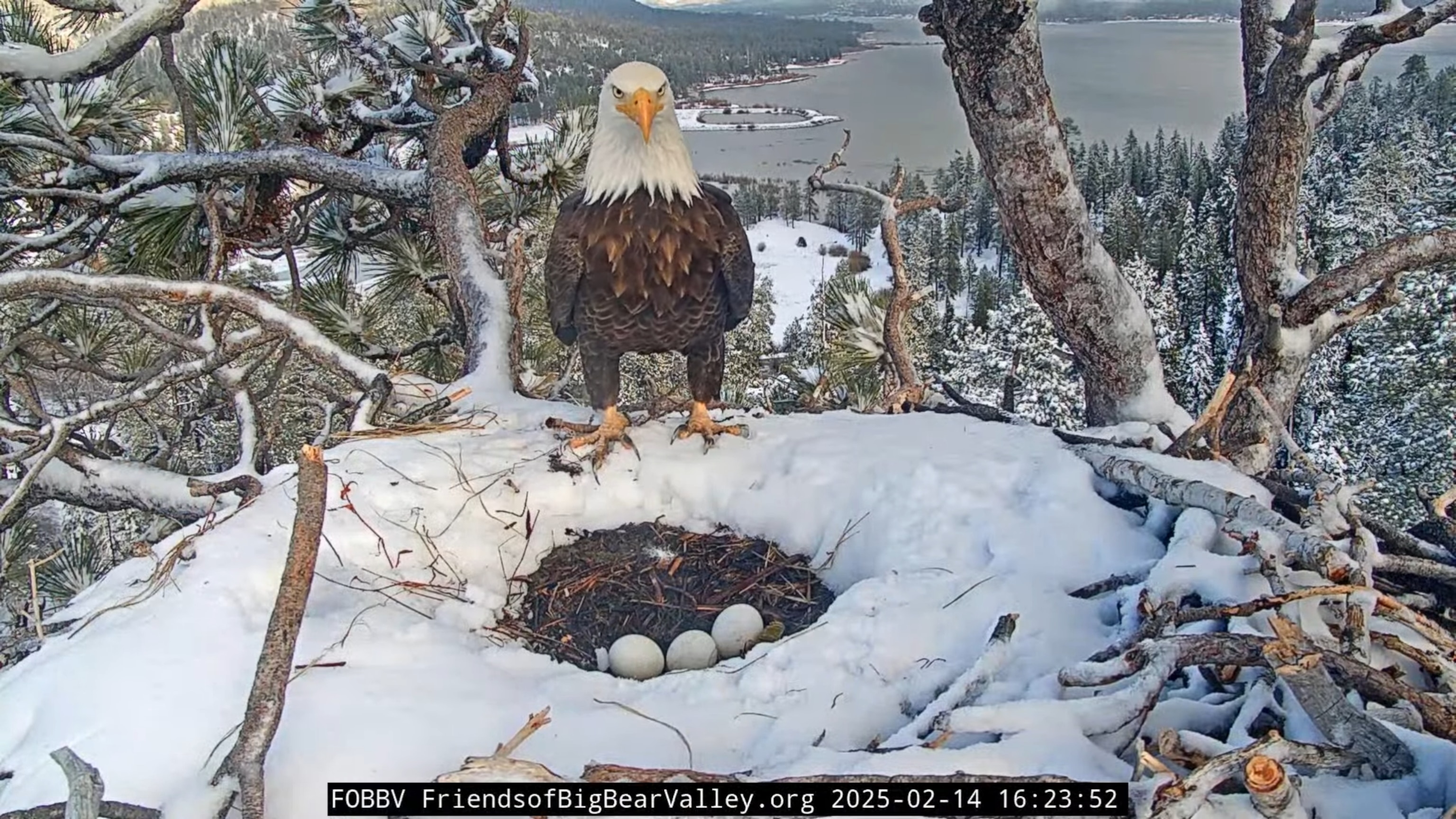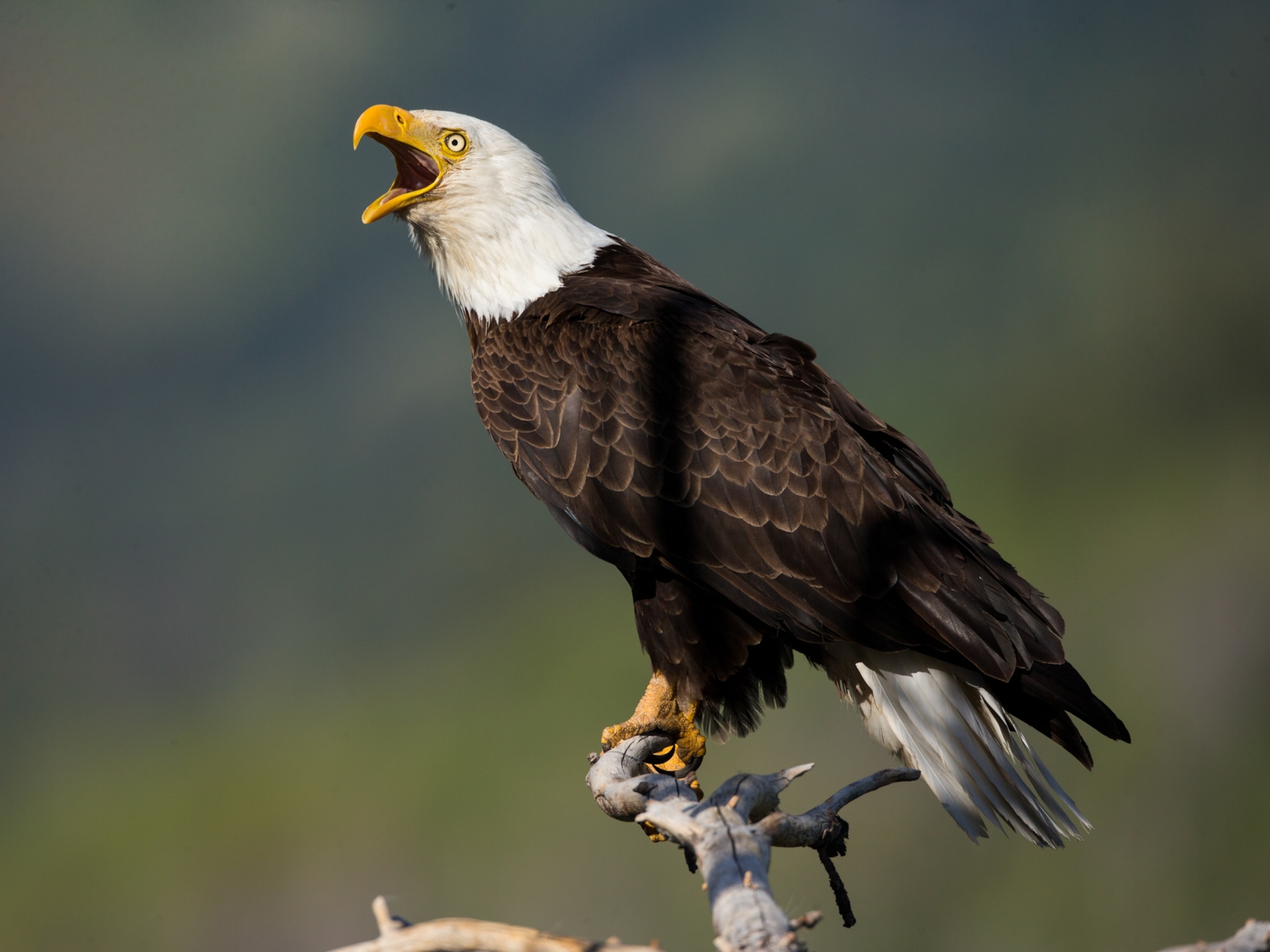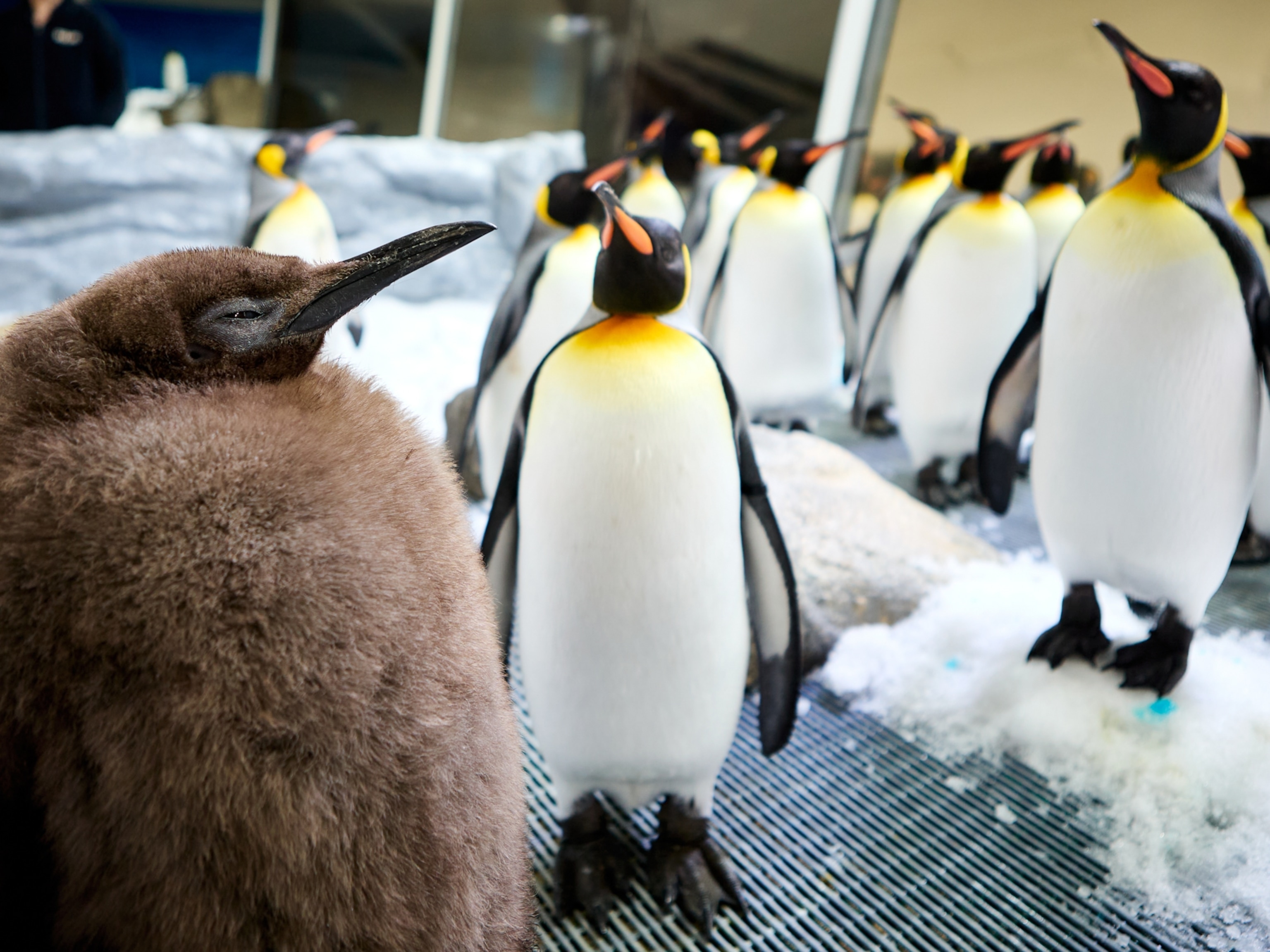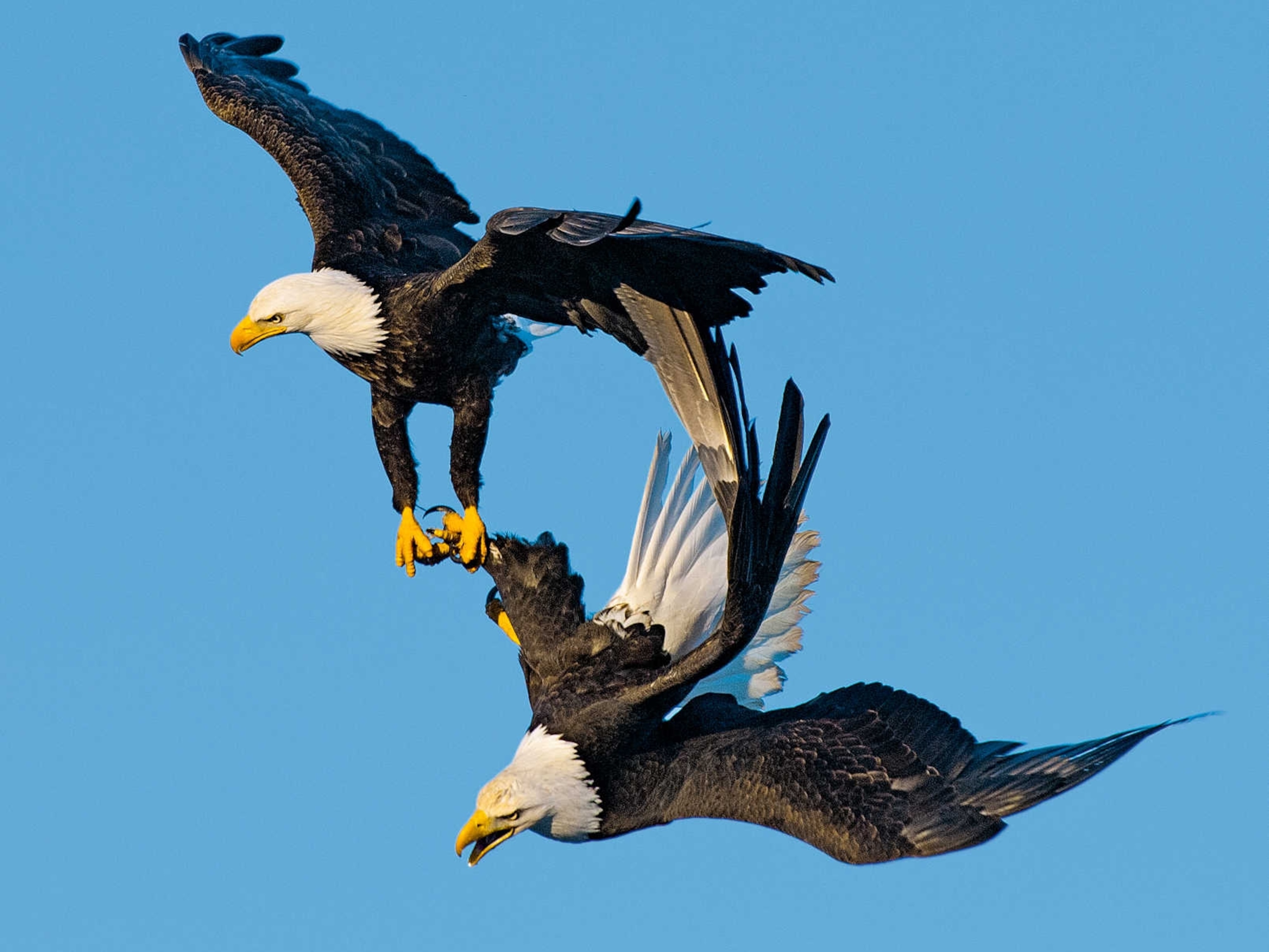The internet’s favorite bald eagles, Jackie and Shadow, just had hatchlings
After losing their chicks for the past two years, these famous bird parents finally got some good news at long last.

Jackie and Shadow, a beloved bald eagle pair in Big Bear Lake Forest, a hundred miles northeast of Los Angeles, welcomed two new chicks into the world, one at around 4 a.m. on March 4 and the other at 11:36 p.m. on March 3. The world is still waiting to see if another eaglet emerges from the couple’s third egg.
"So, all of us are just crying tears of joy for eagle babies in the middle of the night?" commented one Facebook user on a video of the hatchlings posted by the nonprofit Friends of Big Bear Valley.
The nonprofit launched a live feed of the eagle nest in 2015—and these bald eagle mates have since become an internet sensation, says FOBBV Executive Director Sandy Steers.
(3 myths about bald eagles you may have thought were true.)
As time went on “people got attached to Jackie and Shadow,” she says—not to mention their unique personalities as they went about their daily lives in a 145-foot tall Jeffrey pine tree.
Steers says she often hears people say that Jackie and Shadow argue just like they do with their spouses. “They're comparing themselves, seeing the connection between themselves and nature,” she says.
Even more relatable was the birds’ recent difficulty in having hatchlings. That may be why some 71,928 people—a crowd wouldn’t even fit into Dodger Stadium—were watching the nest cam the morning the second hatchling arrived.
A new hope for healthy chicks
Jackie and Shadow's saga is certainly compelling enough to hold an audience. Their first clutch of eggs as a couple produced a single healthy chick, Spirit, on March 3, 2022. But the following two years were sorrowful ones: Two eggs were produced in 2023 but were eaten by ravens. Then in 2024 there were three eggs but none hatched, possibly because of extreme cold or low oxygen, Steers thought.
Bob Mulvihill, ornithologist at the National Aviary in Pittsburgh says this is “within the limits of what you might expect form a young mating pair.”
(What is a bald eagle? Here's what to know about these birds.)

All seems to be going well with the new chicks so far—and though a happy ending is never guaranteed in nature, Mulvihill adds that there’s reason to hope that this year they may “manage to raise all three out of the nest.”
Eagles are long-lived birds, and “they’re in it for the long haul,” Mulvihill says. “They have a low annual reproductive out but over the course of their lifetime they more than replace themselves in the population.”
As for the thrill of watching a live cam like this one, Mulhivill gets it.
"It is at once heartening and wonderful and frightening and terrible to watch anything like this live, because in a moment it can go bad in a completely natural way," he says. But that's how the wild world works.
How long does it take for eagles to hatch?
It was on January 22, just over five weeks ago, that Jackie laid the first egg of 2025. The second came on January 25 and the third on January 28.
Nest cam watchers finally spotted a pip—or the crack that means hatching has begun—in the first egg on the afternoon of March 2, and the second about 20 hours later on March 3. (Coincidentally, this was also the birthday of the pair’s last hatchling, Spirit.)
“It takes a lot of energy for them to pip the eggshell and then actually crack the rest so they can hatch,” says Lori Arent, interim director at the Raptor Center of the University of Minnesota.
By the afternoon of March 4, watchers were hoping for glimpses of the gray, downy chicks whenever Shadow and Jackie stood up to check them or feed them tiny bits of fish.
“I saw one of them take some food,” Arent said after watching the live feed. “They’re acting very typically for eaglets of their age at this point.”
What happens next?
Both parents in a bald eagle coupling are known to take an active role in rearing their chicks—taking turns sitting on the eggs, delivering food, and keeping predators away.
They’re taking little bits of fish now but soon, Arent says, but as the chicks get older “their appetites are going to increase dramatically and it’s going to take both the parents hunting in order to bring them enough food,” so in time “you may not see them at the nest site at all.”
Feathers don’t appear on bald eagle chicks for about 24 days. Chicks begin to fly at about 10 to 12 weeks and permanently leave the nest a month later.
Enjoy the quiet, fuzzy moments while you can, Jackie and Shadow.





